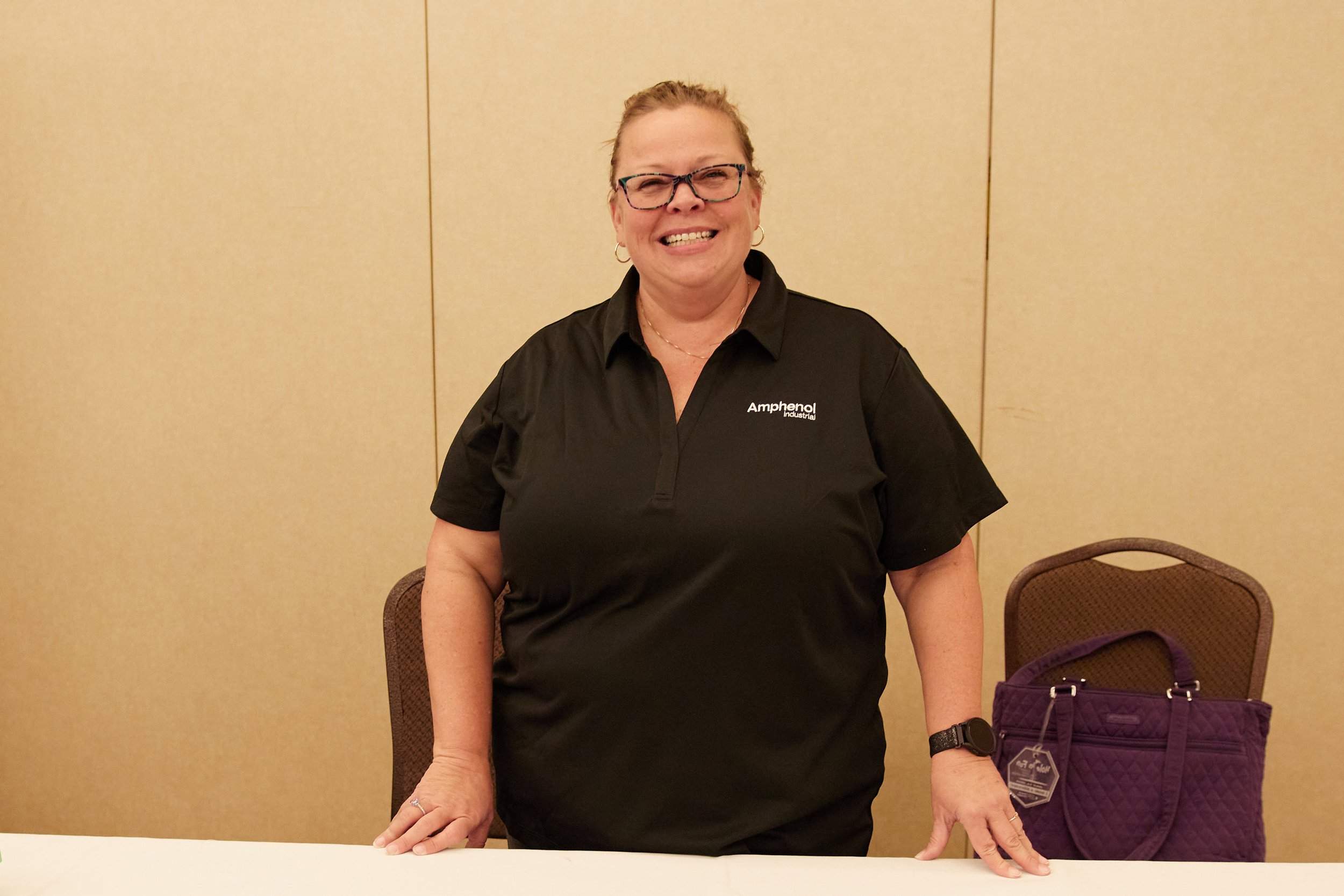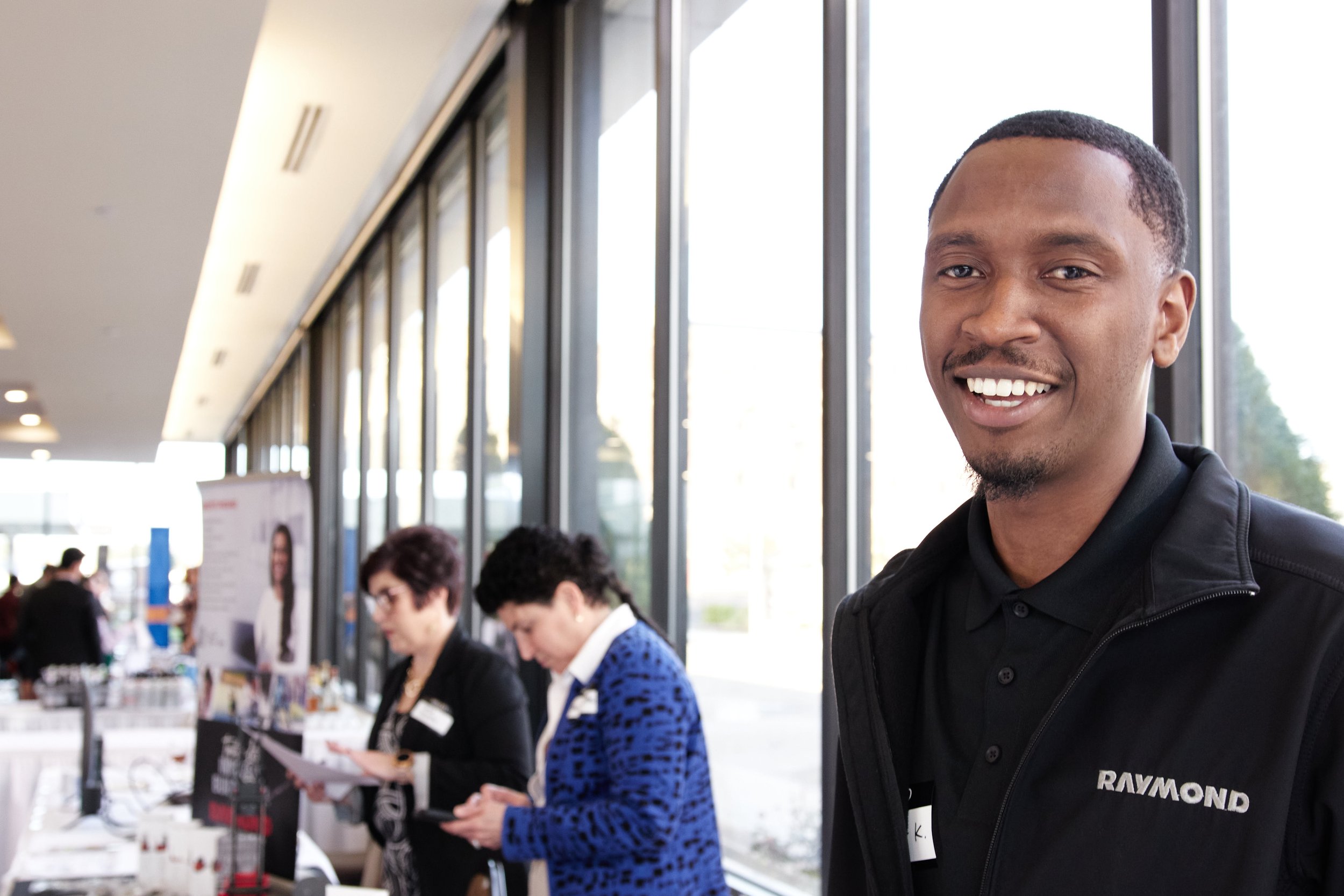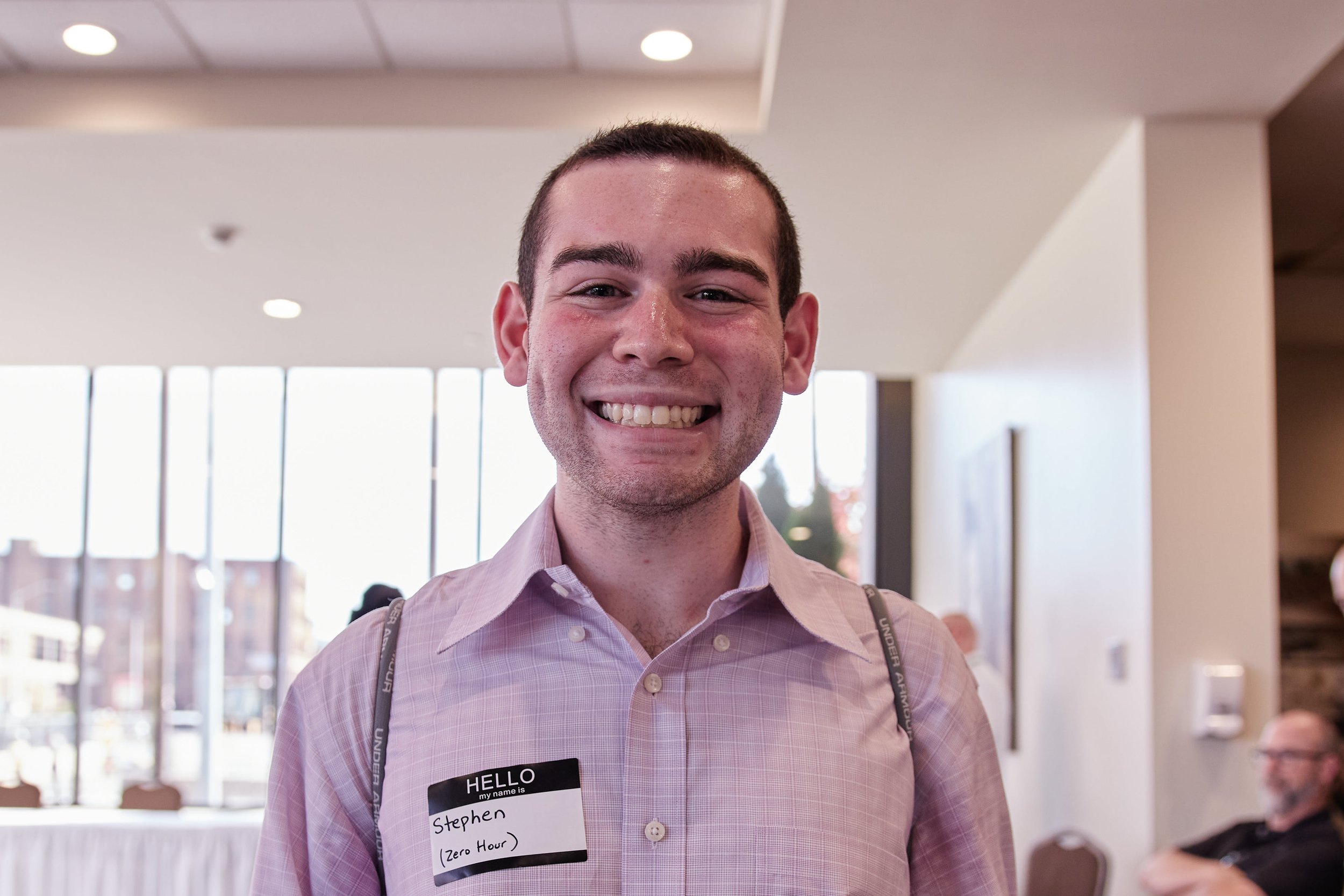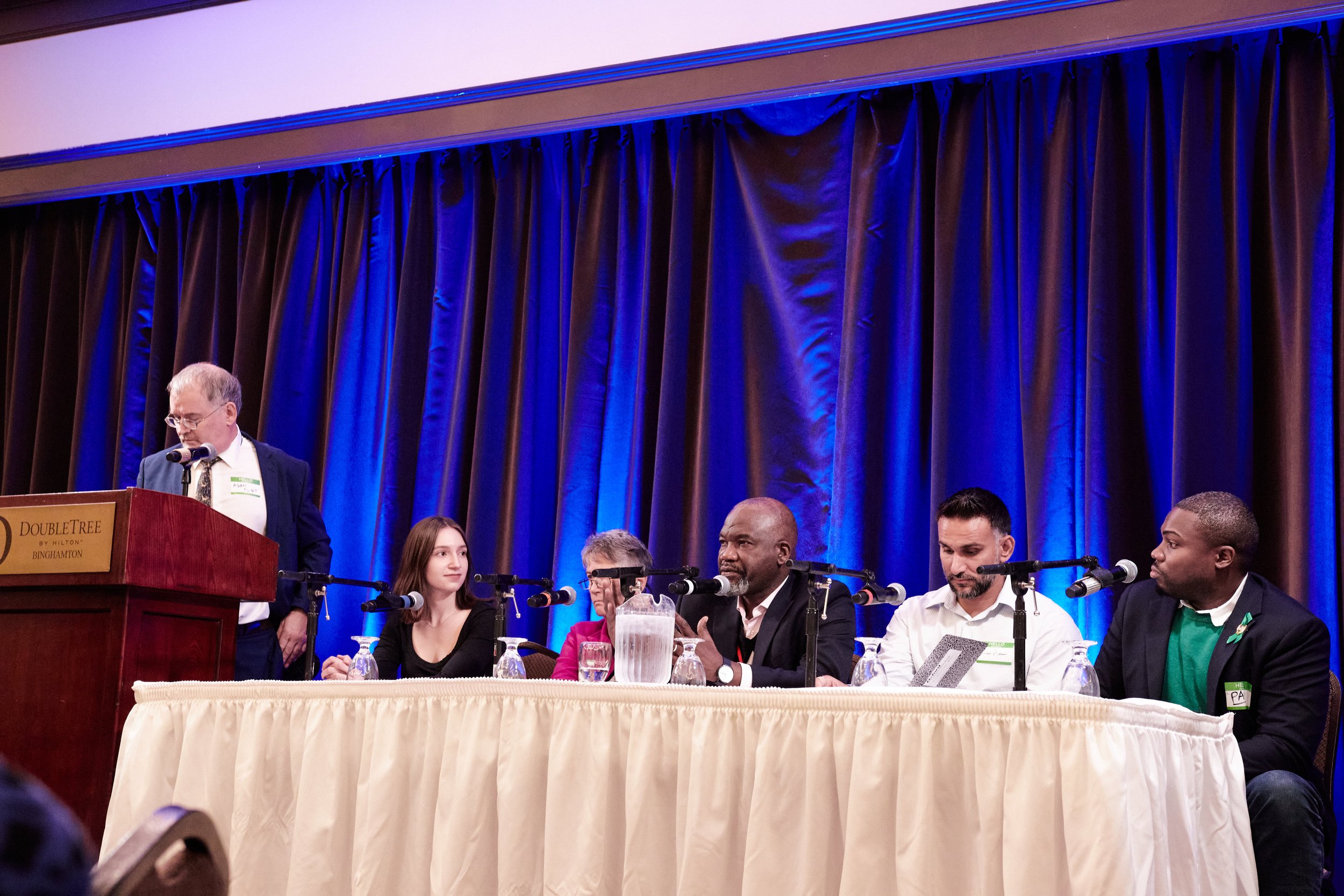Attendees of the Clean Jobs Summit in the ballroom of the DoubleTree hotel. Photo by Aaron Fernando.
About a hundred people gathered in the ballroom of the DoubleTree hotel in Binghamton on Wednesday, September 27 for a day-long summit and job fair focused on the burgeoning green energy sector in New York’s Southern Tier.
In attendance were local installers and energy contractors; union representatives; students and educators associated with the universities; educational nonprofits, research groups, and advocacy groups. Also present were officials from NYSERDA, New York’s energy authority.
The location, Binghamton, NY, was significant; the region will pull in tens of millions in federal funding to spur regional growth in the battery and energy storage industry, directly linked to federal climate goals. Under a federal grant program—the Build Back Better Regional Challenge—SUNY Binghamton was awarded “approximately $63.7 million to accelerate innovation in battery technology and to transform New York’s Southern Tier into a global hub of energy storage manufacturing,” according to a fact sheet from the program.
The day’s events kicked off with NY State Assemblywoman Donna Lupardo addressing the crowd. She was followed by the keynote speaker, Jennifer De Souza of the Raymond Corporation, a Toyota subsidiary that provides industrial forklifts, warehouse equipment, and alternative energy solutions.
De Souza spoke about the decline in manufacturing jobs in New York’s Southern Tier and how the rise in renewables could bring a boon to the sector. She showed charts and data illustrating the U.S.had transitioned its economy, energy infrastructure, and equipment more slowly than other parts of the world, and that New York state has lagged behind larger battery technology investments in other states.
Jennifer De Souza speaks on the decline of manufacturing in recent history and the opportunity that clean energy jobs and battery manufacturing can bring to the region. Photo by Aaron Fernando.
De Souza’s overarching point was that this region needs to take action quickly or get left behind economically: “How do we overcome the barriers of many different interests and priorities, whether public enterprises, private enterprise, [or] government?” asked De Souza.
This reflected a theme that permeated the event: how to attract and retain skilled workforce in the Southern Tier. “How do we solve the workforce challenges?” continued De Souza. “How do we solve the housing challenges? Here's what I know: when the jobs are there, people will come.”
Following the keynote, a first panel discussion focused on actual, on-the-job training programs. Panelists representing BlocPower and Cornell Cooperative Extension (CCE) Tompkins spoke on the panel, talking about the Ithaca Green New Deal and decarbonization efforts in Ithaca and Tompkins County.
Panel 1 from left to right: Adam Flint, NEST; Jaden Beck, BlocPower; Gay Canough, ETM Solar; Aloja Airewele, CCE Tompkins; Shivan Mizouri, IM3NY; Paul Presendieu, Soulful Energy. Photo by Aaron Fernando.
“Environmental literacy does bring in environmental justice, climate justice, [and it addresses] all the inequities we're talking about,” said Aloja Airewele, who leads CCE Tompkins’ workforce development program.
“In the course of post-pandemic workforce training, you know what has become more important in our training programs?” said Airewele. “It is treating people with kindness… as we train, as we hire, as we employ, as we promote, we should remember we're dealing with human beings–human beings.”
Following the panel and lunch, NY State Senator Lea Webb addressed the multitude of experiences and expertise at the event, pointing out that there were technical people, advocates, educators, and businesses all in the room who needed to come together to achieve New York’s climate goals.
Lea Webb of NY State Senate for the 52nd district addresses the crowd. Photo by Aaron Fernando.
“The impact is in the implementation,” said Webb. “We must continue to keep having these conversations here, but also making sure we’re having the conversations with the folks that aren’t here.”
A second slate of panelists then focused on how to hire and retain a skilled workforce, with panelists honing in on issues of equity that deeply impact the lives of workers—issues that profoundly impact the ability to attract and retain skilled workers.
Panel 2 from left to right: Christine Martey-Ohola, SUNY Broome; Maribeth Absi, Raymond Corporation; Cory Balliet, BAE Systems; Nikki Post, Southern Tier Community Center; Ebony Hattoh, NENY. Photo by Aaron Fernando.
“We need to start thinking about where people are living—what is the condition that our workers are in when they're coming to work,” said Ebony Hattoh, associate director of New Energy New York (NENY), a project of Binghamton University focused on workforce development, specifically in the battery space. “We’ve all heard that hungry kids can’t learn, right? Well that applies to adults too.”
NENY is a project of Binghamton University started with federal funding from the Build Back Better Challenge, mentioned above.
“Our region is from Binghamton to Corning,” Hattoh mentioned in an interview later. “What we're trying to do is increase the supply chain and possibly rival Asia in regards to electric vehicle battery manufacturing.”
After the summit portion of the day wound down with a breakout session, the clean energy careers job fair kicked off in the neighboring rooms and lobby. The job fair attracted a number of new faces: job seekers and employers interested in green jobs generally, even if they missed the earlier summit.
Several people at the fair—employers and representatives from organizations, as well as job-seekers themselves—were willing to share their stories with Smart Energy Choices. To get a sense of the industry’s need for jobs, and those who are interested in those jobs, read what they shared below.

![“We do have some training programs. One of those is the Battery Academy, where you can learn [about] the full lifecycle of a battery: extraction, what chemicals are involved in different applications, all the way into recycling–so second and third](https://images.squarespace-cdn.com/content/v1/5a4b9f0efe54efec47a230ce/1697052034486-8WPVYJIOA26OXJYFP1JU/2320927+Clean+Energy+Careers+Summit-Ebony+Hattoh+New+Energy+New+York-Aaron+Fernando.jpg)

![“I am looking for people [to join] our install crew, somebody who is upbeat, that is not afraid of heights or confined spaces that wants to get the work done. We do a lot of community outreach, so somebody who has a heart for the lower-income peop](https://images.squarespace-cdn.com/content/v1/5a4b9f0efe54efec47a230ce/1697052061410-3GBAW4L5YTV5M1K98ASV/2320927+Clean+Energy+Careers+Summit-Jess+from+Insulation+Man-Aaron+Fernando.jpg)
![“I am looking for an electrical engineering job, so that’s why I came to the green energy career fair. Right now, my dream job is [becoming an] electrical engineer or systems engineer or a technical support engineer.” - Moxanki, Graduate Stude](https://images.squarespace-cdn.com/content/v1/5a4b9f0efe54efec47a230ce/1697052066276-OMYXYI1GT6PTW9R4BC8N/2320927+Clean+Energy+Careers+Summit-Moxanki+Grad+Student-Aaron+Fernando.jpg)


Whether you’re a job seeker, a contractor, or are simply interested in workforce for any other reason, you can find out more about how to get involved in the intersection of climate efforts and jobs on our workforce development page.






